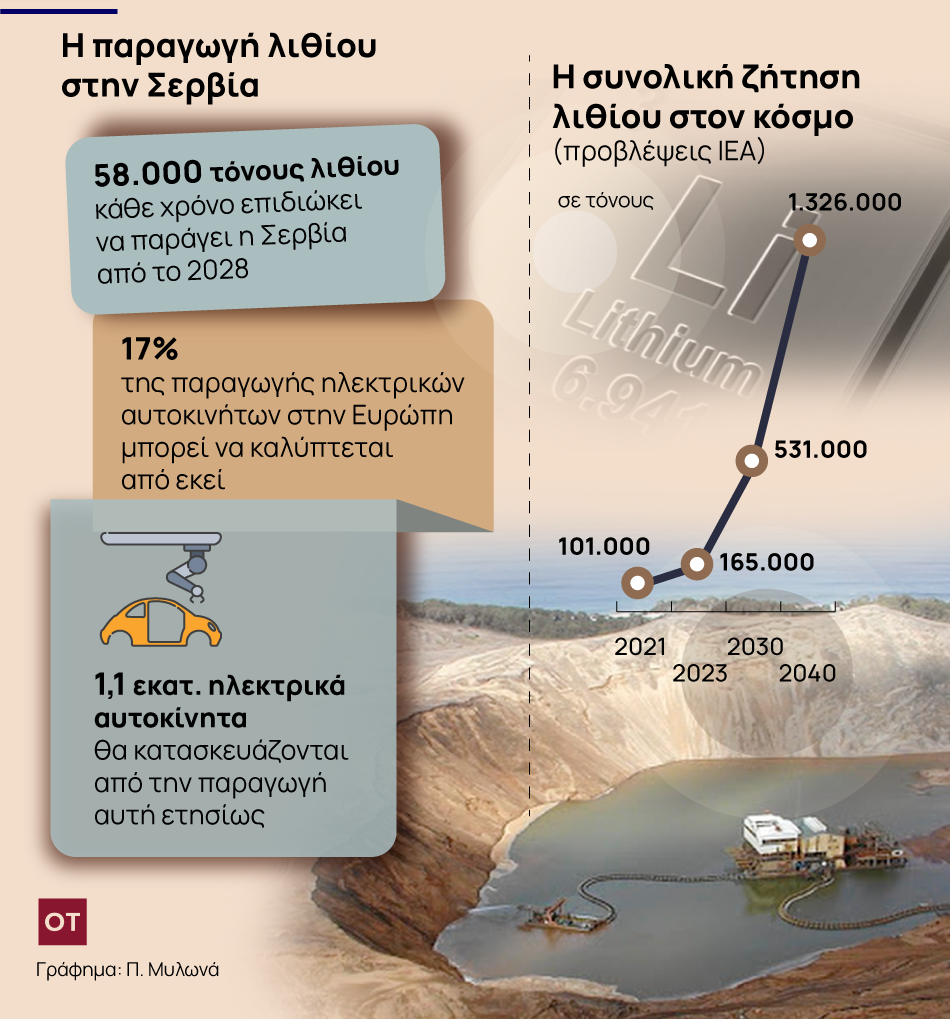
Serbia aims to become Europe’s largest producer of lithium, the primary metal used to make electric car batteries and other uses, by 2028. The country now appears to be unfreezing a deal with British-Australian mining company Rio Tinto to open a mine by 2028 that will produce 58,000 tons of lithium per year, enough to make 17% of the electric cars produced in Europe, about 1.1 million cars. Cars.
The company’s name comes from the river of the same name at the Huelva site in southern Spain, which is bright red-brown for 50 kilometers due to its high iron and heavy metal content. There were the Red River Mines where the company began its activities in the nineteenth century to attract international investors. Rio Tinto means “Red River” in Portuguese.
Now Serbian President Aleksandar Vucic has told the Financial Times that what he called “new guarantees” from British-, Australian- and EU-owned Rio Tinto appear to address the country’s concerns about whether environmental standards necessary for lithium mining in Serbia will be met. Wall site in western Serbia. The project has been stalled for years due to widespread concerns about environmental impact.
Countries like China have already achieved leadership in lithium production thanks to their natural resources
Vucic seemed confident that he would also secure the necessary commitments from EU leaders for similar investments in Serbia, such as battery manufacturing and electric vehicle production.
If Serbia’s demands for “the entire value chain and exemplary environmental protection” are met, Vucic said, business leaders and politicians will arrive in Belgrade next month to officially announce the project. This is an important economic step for the country, if serious environmental concerns are addressed, at a time when demand for lithium is constantly increasing.
High demand for lithium
It is worth noting that by 2030, demand for lithium is expected to nearly triple, while this demand is expected to increase eight-fold by 2040. This is mainly due to battery production needs in electric vehicles and other energy storage uses, according to the report Issued in mid-May 2024 by the International Energy Commission (IEA).
In this report, the IEA forecasts that total global demand for lithium will nearly triple from 165,000 tons in 2023 to 531,000 tons in 2030. It also forecasts that it will grow more than eight-fold to reach 1,326,000 tons in 2040 (1,326 kiloton or kiloton).
Lithium fever in Europe
A number of lithium mining and processing projects are already underway in Europe, including Britain. Savannah Resources is already developing Europe’s first major mine in northeastern Portugal, where the region’s most accessible resources are located. Development work began in 2017, and the mine will begin operating by the end of 2026, according to information from the Sustainable Opinions website.
Now, a large part of the demand in the European Union wants to be met by Serbia, which is seeking to develop the largest lithium mining mine in Europe, after an agreement with the second largest mining company in the world (after BHP), Rio Tinto. .
The largest producers
Countries like China have already achieved leadership in lithium production thanks to their natural resources. Nearly half of the world’s lithium is produced in Australia, followed by Chile (28%) and China (13.1%).
Data from the European Commission’s so-called Raw Materials Information System shows that 3.1% of global lithium reserves are in the European Union, while Australia and China have the largest shares, at 24% and 21% respectively.
Furthermore, the EU currently accounts for only 0.1% of global lithium production and processing, and this comes exclusively from Portugal. China is the largest processing country in the world, representing 69.2% of this global capacity. Followed by Chile with 17% and Argentina with 7%. The IEA predicts that by 2030, 85% of lithium processing will be carried out in China, Chile and Argentina.
source: after that

“Avid problem solver. Extreme social media junkie. Beer buff. Coffee guru. Internet geek. Travel ninja.”






More Stories
“Recycling – Changing the water heater”: the possibility of paying the financing to the institution once or partially
Libya: US General Meets Haftar Amid Tensions Between Governments
New tax exemption package and incentives for business and corporate mergers..